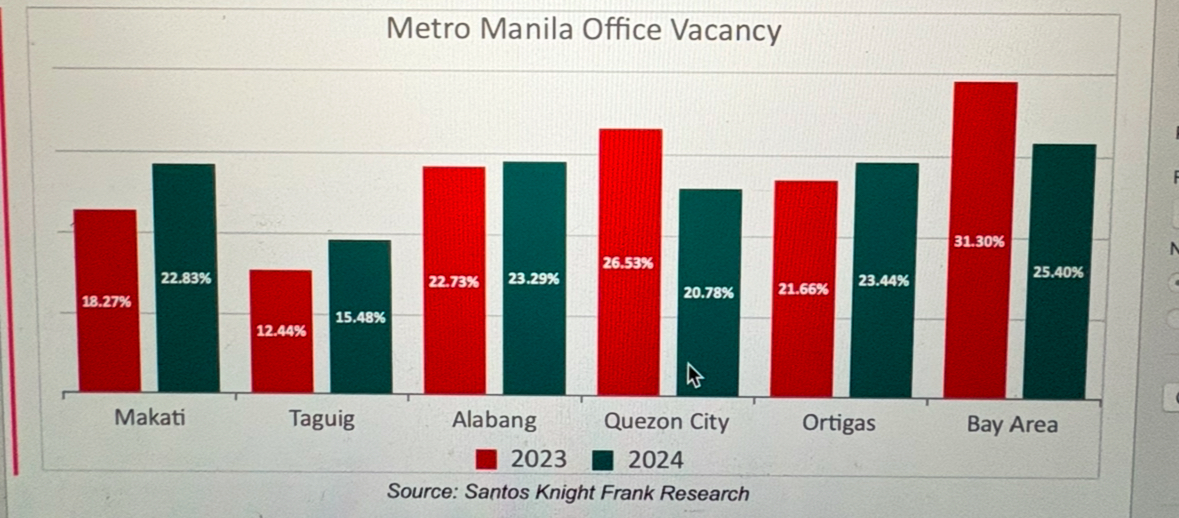
Metro Manila’s office space market continues to experience high vacancy rates, projected to remain at 18%-21% range as demand growth struggles to keep pace with the steady influx of new supply. This is according to Santos Knight Frank (SKF), the country’s leading property management and consultancy firm.
“The office vacancy rate would be pretty similar maintaining at 18-21% range,” said Morgan McGilvray, Senior Director of Occupier Strategy and Solutions at SKF, during a presentation on the Real Estate Outlook 2025. SKF data indicates that the current vacancy rate stands at 20%, with an existing office space supply of 8.6 million square meters. An additional 300,000 square meters of office space is expected to enter the market in 2025.
‘So, it is still a tenant’s market because even if demand is up, the vacancy rate is still pretty steady,” McGilvray added.
He also noted that vacancy rates have improved since the pandemic, which caused office occupancy to plummet to record lows.
Among Metro Manila’s various central business districts (CBDs), the Bay Area continues to have the highest office space vacancy rate at 25.4%, down from 31.3% in 2023. It is followed by Ortigas at 23.44% (up from 21.66%), Alabang at 23.29% (up from 22.73%), and Makati at 22.83% (up from 18.27%). The districts with the lowest vacancy rates are Taguig at 15.4% (up from 12.44%) and Quezon City at 20.78% (down from 26.53% in 2023).
SKF Chairman Rick Santos echoed McGilvray’s remarks, saying, “It is time to move for a better deal because there is ample supply. Tenants have leverage now. It is time to look at the office space strategy.” He highlighted favorable deals, such as those involving parking slots, among others.
Santos also reflected on the market conditions leading up to 2019, when landlords enjoyed minimal vacancies. However, the pandemic and the shift to work-from-home arrangements led to a sharp decline in demand. Despite this, demand has gradually recovered as businesses, particularly in the business process outsourcing (BPO) sector, increasingly require employees to return onsite.
The Philippine government’s recent executive order banning the operations of Philippine Offshore Gaming Operators (POGOs) is expected to further increase vacancy rates, especially in areas heavily reliant on POGO tenants.
The Bay Area, a hub for POGO-related office spaces, is anticipated to be significantly affected. However, it has shown resilience, with vacancy rates decreasing from 31.3% in 2023 to 25.4%, a drop of 5.9%, even after the directive.
Manila remains a top destination for BPO companies, ranking as the third most affordable city in the Asia-Pacific region for office occupancy costs, according to Knight Frank’s Q3 2024 *Office Highlights* report.
Additionally, green-certified buildings continue to attract strong demand, with an average occupancy rate of 87.27%, compared to 82.39% for traditional office spaces. This trend is particularly evident in Makati and Bonifacio Global City (BGC) in Taguig.




